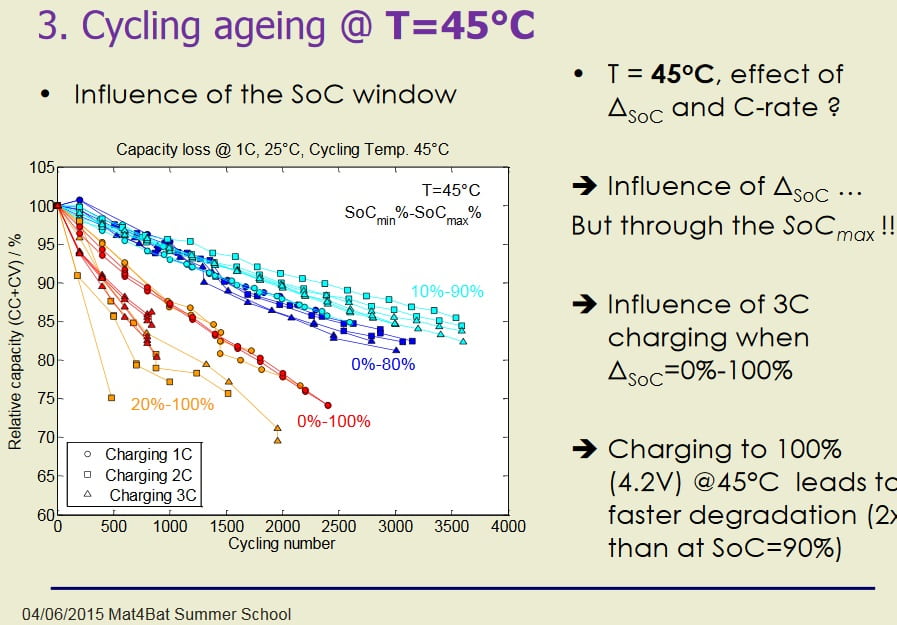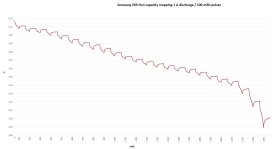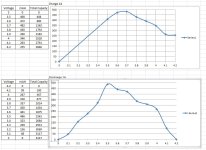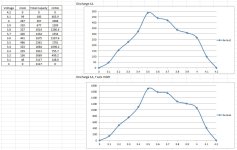DrkAngel
1 GW
.
... DOD is major factor in cycle life!
As I have long suspected, and advocated, tests and manufactures now indicate that DOD is a major factor in reducing\extending cycle life.
Manufacture clearly indicates discharging to 10%, rather than 0%, capacity doubles cycle life!

Tests clearly indicate that avoiding discharging the last 10% of rated capacity provides greatly extended cycle life!

My original reasoning was to avoid the voltage "cliff" indicated in all discharge graphs.
Going below this voltage produces the voltage sag and heat production indicating-exemplified by excessive discharge rates ... which we all know damage cells and cycle life.
There seems to be mounting evidence that DOD is nearly as critical as SOC in enhancing\degrading cycle life.
10%-90% seems to be promoted as optimal. (80% capacity with possibly 400% cycle life)
5%-95% might provide the greatest enhancement at the least capacity loss.
My testing seems to indicate that not dropping over the voltage cliff results in ≤ 5% capacity loss ... with a, now indicated, great extension in cycle life!
Please post any further proof of DOD as a major factor in cycle life ...
... DOD is major factor in cycle life!
As I have long suspected, and advocated, tests and manufactures now indicate that DOD is a major factor in reducing\extending cycle life.
Manufacture clearly indicates discharging to 10%, rather than 0%, capacity doubles cycle life!
Tests clearly indicate that avoiding discharging the last 10% of rated capacity provides greatly extended cycle life!
My original reasoning was to avoid the voltage "cliff" indicated in all discharge graphs.
Going below this voltage produces the voltage sag and heat production indicating-exemplified by excessive discharge rates ... which we all know damage cells and cycle life.
There seems to be mounting evidence that DOD is nearly as critical as SOC in enhancing\degrading cycle life.
10%-90% seems to be promoted as optimal. (80% capacity with possibly 400% cycle life)
5%-95% might provide the greatest enhancement at the least capacity loss.
My testing seems to indicate that not dropping over the voltage cliff results in ≤ 5% capacity loss ... with a, now indicated, great extension in cycle life!
Please post any further proof of DOD as a major factor in cycle life ...






